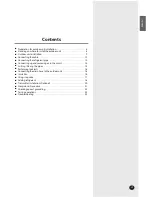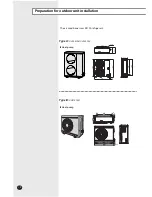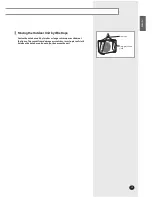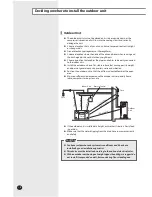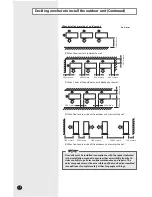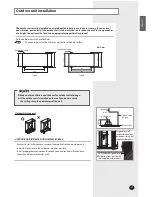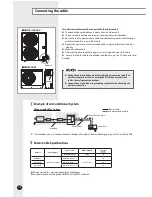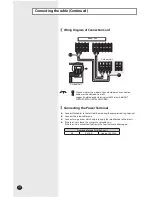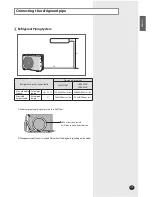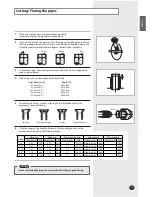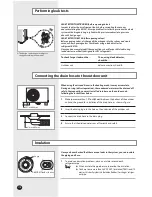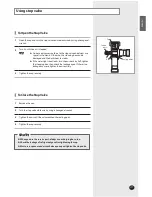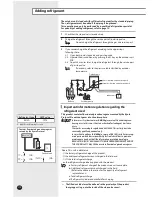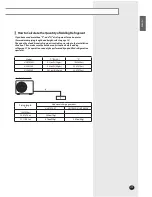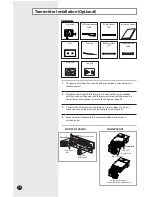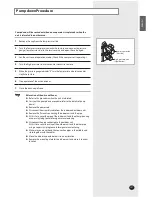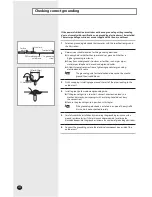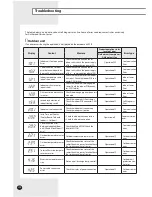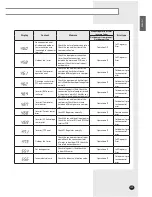
E-
16
Performing leak tests
Insulation
No gap
NBR(T
0.511inch
or thicker)
Connecting the drain hose to the outdoor unit
B
A
The designs and shape are subject to
change according to the model.
LEAK TEST WITH NITROGEN (before opening valves)
In order to detect basic refrigerant leaks, before recreating the vacuum
and recirculating the R410A, it’s responsable of installer to pressurize the whole
system with nitrogen (using a cylinder with pressure reducer) at a pressure
above 30 bar (gauge).
LEAK TEST WITH R410A (after opening valves)
Before opening valves, discharge all the nitrogen into the system and create
vacuum. After opening valves check leaks using a leak detector for
refrigerant R410A.
Once you have completed all the connections, check for possible leaks using
leak detector specifically designed for HFC refrigerants.
To check for gas leaks on the...
Then, using a leak detector,
check the...
Outdoor unit
Valves on sections A and B.
When using the air conditioner in the heating mode, ice may accumulate .
During de-icing (defrost operation), the condensed water must be drained off
safely. Consequently, you must install a drain hose on the outdoor unit,
following the instructions below.
1
Make space more than
1.97inch(50mm)
between the bottom of the outdoor
unit and the ground for installation of the drain hose, as shown in figure.
2
Insert the drain plug into the hole on the underside of the outdoor unit.
3
Connect the drain hose to the drain plug.
4
Ensure that the drained water runs off correctly and safely.
Once you have checked that there are no leaks in the system, you can insulate
the piping and hose.
1
To avoid condensation problems, place an insulator around each
refrigerant pipe.
Note
When insulate the pipe, be sure to overlap the insulation.
You have to use more than
248°F(120°C)
insulation(
T0.511inch(13
mm)
or thicker Acrylonitrile Butadien Rubber) for the gas refriger-
ant pipe.
1.97inch(50mm)
1.18inch(30mm)
Summary of Contents for UH070CAV1
Page 26: ......


